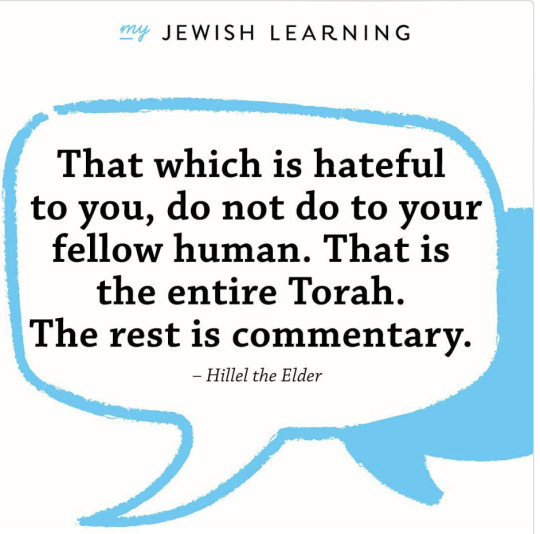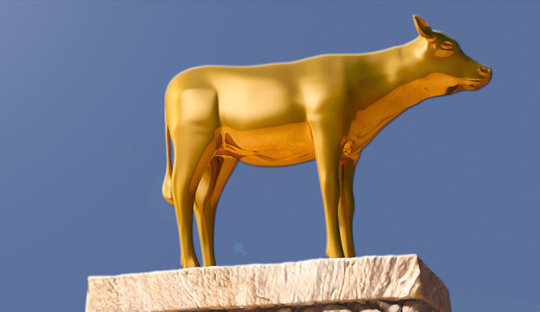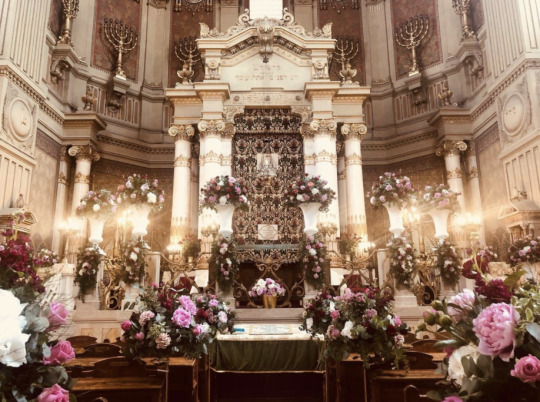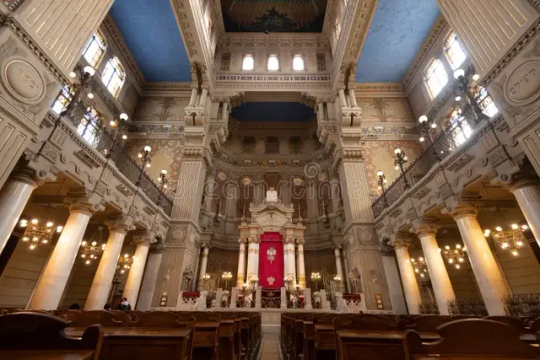#JewishCommunities
Explore tagged Tumblr posts
Text
Something about Venetian ghetto
The first ghetto in Italy was established in Venice on March 29, 1516. The Republic of Venice ordered the Jewish residents to move to an area where an old, disused foundry once stood. This area was called the "ghetto," a term derived from “geto de rame” (copper casting), referring to the practice of dumping copper waste in that deserted spot.
In the centuries leading up to the ghetto's creation, Jews primarily lived in towns on the Venetian mainland, with only a few families residing permanently in Venice. Mainland Jews, excluded from guilds and barred from owning property, were forced to earn a living through pawn lending or trading used goods. They were allowed to stay in Venice for no more than fifteen consecutive days, during which they conducted business at the Rialto market before returning to Mestre. Some Jews were also permitted to practice medicine.
However, after Venice's defeat at the Battle of Agnadello (1509), during a time of social and economic difficulty, the Venetian government allowed Jews to settle in the historic center in exchange for an annual contribution of 6,500 ducats. Many Jewish families moved into homes near Rialto, causing significant protests, particularly from certain preaching friars. In 1515, the Venetian Senate proposed allowing Jews to remain in the city due to their economic contributions but decided to isolate them in specific areas.
Thus, in 1516, the Venetian government decreed the segregation of Jews into a special district, creating the first ghetto in history. Jews were required to wear a yellow cap, except for certain doctors and bankers. The ghetto was surrounded by high walls, with gates that were locked every evening and reopened at dawn. Guards, paid by the Jewish community, patrolled the area day and night, including the surrounding canals.

#VenetianGhetto#JewishHistory#Venice1516#HistoryUnveiled#GhettoOrigins#CulturalHeritage#MedievalVenice#JewishCommunities#HistoricalVenice#RialtoStories#SocialHistory#EconomicImpact#HistoricalMilestones#LifeInTheGhetto#VenetianRepublic
3 notes
·
View notes
Text
NYC Official Faces Backlash for Anti-Semitic Posts: Calls for Accountability and Resignation #accountability #antiSemiticposts #antiSemitisminprogressivecircles #discrimination #growth. #harmfulstereotypes #hatespeech #humanerror #Jewishcommunities #LindaTigani #MayorBilldeBlasio #NewYorkCitygovernment #prejudices #publicofficials #RacialEquityandInclusionOffice #resignation #responsibilityofleadership #riseinhatecrimes #socialjusticemovements #systemicracism
#Politics#accountability#antiSemiticposts#antiSemitisminprogressivecircles#discrimination#growth.#harmfulstereotypes#hatespeech#humanerror#Jewishcommunities#LindaTigani#MayorBilldeBlasio#NewYorkCitygovernment#prejudices#publicofficials#RacialEquityandInclusionOffice#resignation#responsibilityofleadership#riseinhatecrimes#socialjusticemovements#systemicracism
0 notes
Text





There are four mitzvot, commandments, on Purim:
(1) hearing the megillah
(2) giving gifts to the poor (matanot l’evyonim)
(3) giving gifts to friends (mishloach manot)
(4) feasting
myjewishlearningcom
#purim#jewishholidays#jewishlearning#jewisheducation#jewishpeople#megillatesther#megillah#jewishcommunity#jewishlife#synagogue#🎭️
96 notes
·
View notes
Text

myjewishlearningcom
This is the Jewish version of the Golden Rule. Rather than telling people to do unto others what they wished done for themselves, the first century sage Hillel taught the inverse: Don’t do to others what you’d hate to have done to you. Hillel’s teachings are featured prominently in the Talmud and his wisdom inspires to this day.
#jewishquotes#jewishwisdom#talmud#judaism#jewishlife#jewishcommunity#jewishlearning#jewisheducation#torah#jewishhistory#jewishpride
182 notes
·
View notes
Text
Jewish Festival of Lights

The Jewish Festival of Lights is known as Hanukkah, also spelled Chanukah. It is an eight-day celebration that commemorates the rededication of the Holy Temple in Jerusalem after it was reclaimed by the Maccabees from the Greek Seleucid Empire in the 2nd century BCE.
The holiday is typically celebrated in December, and it involves lighting a nine-branched candelabrum known as a menorah. One candle is lit on the first night, and an additional candle is added each subsequent night until all nine candles are lit on the eighth night. The ninth branch, known as the shamash, is used to light the other candles.
Other Hanukkah traditions include playing with a spinning top known as a dreidel, which has Hebrew letters on each side, and eating foods fried in oil, such as latkes (potato pancakes) and sufganiyot (jelly-filled donuts). The use of oil symbolizes the miracle of the small amount of oil that burned for eight days in the Temple's menorah.
3 notes
·
View notes
Photo

Hey there, fellow culture enthusiast! 🎉🔯
You just struck gold if you've been on the hunt for something unique this Jewish American Heritage Month. We've got a sizzling deep-dive into Jewish culture, humor, and a dash of bagel banter! Believe us, you don't want to find yourself in the dreaded clutches of FOMO, do you? 😉
Click right here 👉 https://bit.ly/AmericanJewishHeritage 🚀 and be part of the celebration! 🎈
Share it, love it, and most importantly, enjoy it! 💙
2 notes
·
View notes
Text
JewishDvds.com is now on the market! A great name for media, culture, and entertainment. Lock it in now: https://www.godaddy.com/en-uk/domainsearch/find?domainToCheck=jewishdvds.com
0 notes
Text
Whatever Kind Of Jew You Don’t Like I’m That One Classic T-Shirt
Whatever Kind of Jew You Don’t Like I’m That One Classic T-Shirt
Show off your sense of humor and bold personality with the Whatever Kind of Jew You Don’t Like I’m That One Classic T-Shirt. This unique tee combines wit and individuality, making it a must-have for anyone who loves to stand out and spark conversations.
Store Here: Whatever Kind Of Jew You Don’t Like I’m That One Classic T-Shirt
Features You’ll Love:
Soft & Comfortable: Crafted from premium-quality cotton for an easy, breathable fit.
Durable Design: Reinforced stitching ensures it’s built to last.
Unisex Style: Flattering for all genders and available in a range of sizes.
Statement-Making Print: A fun, thought-provoking design that gets noticed.
Whether you’re heading to a casual meetup or want a quirky gift for a loved one, this T-shirt is the perfect choice.

Why You’ll Love It
This T-shirt is more than just a piece of clothing—it’s a statement of self-expression. Whether you’re making light of stereotypes or showcasing your pride, this shirt delivers the perfect mix of humor and authenticity. It’s ideal for casual outings, social events, or as a thoughtful gift for a friend with a great sense of humor.
Styling Tips
Pair this classic T-shirt with jeans, shorts, or a casual jacket for a laid-back, effortlessly cool look. Add some sneakers or sandals, and you’re ready to turn heads wherever you go.
Own Your Identity in Style
Wear your humor, pride, and individuality with the Whatever Kind of Jew You Don’t Like I’m That One Shirt. Order yours today and let the world know that you’re unapologetically yourself!
Available now in various sizes and colors. Don’t wait—grab yours today!
#JewishPride#JewishHumor#JewishLife#JewishCulture#JewishHeritage#JewishIdentity#ProudJew#JewishCommunity#JewishTradition#JewishAndProud
0 notes
Text
We all are here to experience God. Earth gives us an experience of being divine. We are in this simulation to understand who we are to have an experience of what we are. We experience what we are not to know what we are. Because we have not believed in God, we have not understood God. We've not really tapped into the truth of God, so we have not understood ourselves. Our history records all of our experiences of God, which is our unique journey. We all are here with the free will to receive the love of God, but we must want to choose it. We must desire to have it. We have to want it. That is why God is being revealed today, and many can see Him. It has to be dark to see the light. We have to become uncomfortable. We have to become the opposite of who we really are. We are home sick. We have become confused.
We are free to not want to receive the love of God because that is our choice. So, your world is still not dark enough? So the person who does not want to believe in God's love just needs to see that His love is real. But we don't have to be like them. Don't let disbelief ruin your belief. It is a test. In truth, this virtual experience is God's gift to you to experience Him in yourself. ✨️

0 notes
Link
The recent escalation of violence during a pro-Palestine protest outside a Los Angeles synagogue has drawn widespread condemnation, including from President Joe Biden. The incident, which occurred outside the Adas Torah synagogue, underscores the growing tensions surrounding the Israel-Gaza conflict and highlights the broader implications of such confrontations in the United States. President Biden Condemns The Incident: A Clash in Pico-Robertson A Violent Confrontation On a seemingly ordinary Sunday morning, the peaceful neighborhood of Pico-Robertson was thrust into chaos as a protest turned violent outside the Adas Torah synagogue. Around 150 pro-Palestine demonstrators gathered to protest a real estate event hosted by My Home in Israel, a company promoting housing projects in Israel’s Anglo neighborhoods. The Escalation What began as a protest quickly escalated into violence. Videos and eyewitness accounts revealed punches being thrown, protesters wrestling on the ground, and bear spray being used against multiple individuals. The situation necessitated the deployment of approximately 60 police officers to restore order and ensure the safety of the synagogue attendees and the surrounding community. Arrests and Police Response The Los Angeles Police Department (LAPD) reported that one individual was arrested for possessing a spiked post. Additionally, two reports of the battery were filed, and the LAPD has pledged to investigate these incidents further. In response to the unrest, the LAPD announced increased patrols around sensitive religious sites to prevent further violence. Reactions from Leaders President Biden's Condemnation President Joe Biden condemned the violence, expressing his dismay at the events that transpired. "I’m appalled by the scenes outside of Adas Torah synagogue in Los Angeles," Biden stated on X.com. He emphasized that while peaceful protest is a fundamental right, violence and intimidation, especially targeting places of worship, are unacceptable and un-American. California Governor and Los Angeles Mayor Speak Out California Governor Gavin Newsom and Los Angeles Mayor Karen Bass also condemned the violent clashes. Newsom called the events "appalling" and stressed that antisemitic hatred has no place in California. Mayor Bass echoed these sentiments, stating, "Today’s violence in the Pico-Robertson neighborhood was abhorrent, and blocking access to a place of worship is unacceptable." Enhanced Security Measures In the wake of the violence, Mayor Bass has called for increased LAPD patrols in the Pico-Robertson area and around other houses of worship throughout Los Angeles. She assured the community that those responsible for the violence would be held accountable and highlighted ongoing efforts to foster dialogue and unity among diverse community leaders. The Broader Context Tensions Over the Israel-Gaza Conflict The protest outside the Adas Torah synagogue is a microcosm of the broader tensions and conflicts related to the Israel-Gaza situation. The demonstrators aimed to disrupt a real estate event they believed was promoting the sale of Palestinian land. This incident highlights the passionate and often contentious debates surrounding this long-standing geopolitical conflict. The Role of Community and Law Enforcement The involvement of law enforcement in maintaining order during such protests is crucial. The LAPD's swift response helped prevent further escalation and ensured that the rights and safety of all parties were protected. The incident also underscores the need for continuous dialogue and cooperation between community leaders and law enforcement to address and mitigate the root causes of such conflicts. Moving Forward: Community and Legal Responses Community Meetings and Future Actions In the aftermath of the violence, community leaders, including Rabbi Noah Farkas of the Jewish Federation Los Angeles and Councilwoman Katy Yaroslavsky, are set to meet with law enforcement officials and other faith leaders. These meetings aim to discuss steps to ensure the safety and security of all communities in Los Angeles. Legal and Policy Implications The events at the Adas Torah synagogue may prompt reviews of existing policies regarding protests and public safety, especially about sensitive sites such as places of worship. Lawmakers and community leaders may explore additional measures to prevent similar incidents in the future while balancing the rights to free speech and peaceful protest.
#AdasTorahsynagogue#antisemitism#bearsprayincident#communitydialogue#communityhealing#Communitysafety#culturalexchange#enhancedsecurity#faithleadersmeeting#GavinNewsom#interfaithdialogue#internationaltensions#IsraelGazaconflict#Jewishcommunity#KarenBass#L.A.synagogueviolence#LAPDresponse#lawenforcementtraining#legalimplications#MyHomeinIsrael#peacefulprotest#peacefulprotests#PicoRobertson#PresidentBiden#PresidentBidenCondemns#proPalestineprotest#realestateprotest#socialmediamobilization#spikedpostarrest
0 notes
Link
#AdaColau#Antisemitism#Discrimination#Fightingprejudice#Humanrights#Israelrelations#JewishCommunity#LawfareProject#Legalbattle#MayorCollboni
0 notes
Text
Outside of the Twin Cities' Jewish Community
Outside of the Twin Cities' Jewish Community - The arrival of the first Jews in Minnesota may be traced back to the middle of the 19th century. Jewish pioneers, most of whom were of German and Eastern European heritage, established communities in places like Duluth, Rochester, and Winona in Minnesota.Synagogues, schools, and other cultural institutions were founded by the early settlers, who were responsible for the formation of close-knit communities that supported Jewish traditions and ideals.

Outside of the Twin Cities, Jews also established communities. The first permanent Jewish migrants arrived in Duluth in 1869, and it was there that the greatest population could be found. After another decade had gone, a sizable number of Jewish people finally joined them. Jews from Germany and Central Europe were the first to arrive, followed ten years later by Jews from Eastern European countries. The relatively low number of Jewish residents in Duluth served to forestall a schism among the community.
After the Mesabi Iron Range opened for business in the 1890s, the city of Duluth, Minnesota, as well as Superior, Wisconsin, experienced explosive growth as a commercial center. In 1885, Jews with roots in Lithuania laid the groundwork for what would become the Adas Israel Congregation. In 1891, Jews from Hungary and Germany came together to construct Temple Emmanuel, a Reform synagogue. The community of Eastern European immigrants settled in Duluth's West End, which is now known as the Central Hillside neighborhood. This area is located between Twelfth and Twenty-fourth Avenues.
Residents of Duluth who were Jewish were given opportunities to participate in the city's political and economic life. Twenty-three hundred people identified as Jewish called Duluth home by the time World War I came to a close. In the 1930s, when it was at its peak, there were approximately three thousand five hundred people. During this time period, Duluth was home to four synagogues, two cemeteries, a Talmud Torah, three social clubs, and four lodges, in addition to a number of philanthropic organizations and social clubs. The number of Jews living in Duluth has dropped to 2,633 by the year 1940.
During the 1890s, a number of Jews from the Duluth–Superior area relocated to the Iron Range, where they established retail and other enterprises that supplied the burgeoning mining towns in the area. Iron Range Jews were just 1,112 strong at their population's highest point in 1920, but they were able to keep a thriving Jewish community alive for decades. Eveleth, Hibbing, Virginia, and Chisholm were all places that saw the establishment of new synagogues.
At the start of the twentieth century, various towns in the southern part of Minnesota, such as Faribault, Mankato, Albert Lea, and Austin, saw the establishment of modest Jewish populations. Jews congregated for religious purposes in each of these locations. Only in Rochester, where the demand for a local congregation that could serve Jewish patients was created by the creation of the Mayo Clinic in 1905, was a synagogue (Bnai Israel) founded.
In the 1920s, the rate at which Jews were relocating to other parts of the state reached its highest point. At the conclusion of World War I, there were a total of around 4,000 soldiers counted in 145 smaller communities outside of Minneapolis, St. Paul, and Duluth.
The Jewish communities in Minnesota are spread out across the state in a variety of locations. Each community, from the lakeshores of Duluth to the grasslands of Rochester, has a distinct personality that is formed by the environment in which it is located.The Jewish population of Minnesota represents a diverse array of cultural and ethnic traditions, including Ashkenazi, Sephardic, and Mizrahi Jews, amongst others. This variety contributes to the richness of the fabric that is Jewish life in the state.
Synagogues such as Temple Israel in Duluth, Adath Jeshurun Congregation in Rochester, and Shir Tikvah in the Twin Cities are essential components of Jewish community life since they offer both religious direction and social assistance.Jewish residents from all throughout the state of Minnesota are brought together via the efforts of community centers and organizations, which helps to promote a sense of belonging and solidarity.
There is a wide variety of Jewish educational institutions in Minnesota, ranging from Sunday schools to day schools. These schools ensure that the Jewish heritage will be passed down to subsequent generations.The participation of Jewish communities across the state in a wide variety of cultural pursuits, such as music, painting, and literature, contributes to the overall enhancement of Minnesota's cultural landscape.
Jews make up a small percentage of the population in many of these towns and cities, making it more difficult for them to maintain their traditions and fight against negative perceptions.In spite of these obstacles, the Jewish communities of Minnesota have shown extraordinary resiliency and flexibility, which has contributed to the state's total cultural diversity.
The tenacity and variety of Jewish life in the North Star State are on display in the Jewish communities that may be found throughout the state of Minnesota outside of the Twin Cities. These communities contribute to the richness of Minnesota's cultural fabric in a variety of ways, ranging from their historical roots to their modern difficulties.
#love#peace#TwinCities#JewishCommunity#OutsideTheTwinCities#TwinCitiesJewish#CommunityDiversity#JewishLife#CulturalInsights#JewishVoices#ConnectJewish#MidwestJewish#ExploringCulture#CommunityConnections#InclusiveCommunity#DiverseFaiths#JewishHeritage#CityAndCommunity#LocalInsight#CulturalExchange#MidwestCulture
0 notes
Text
NYC Official Faces Backlash for Anti-Semitic Posts: Calls for Accountability and Resignation #accountability #antiSemiticposts #antiSemitisminprogressivecircles #discrimination #growth. #harmfulstereotypes #hatespeech #humanerror #Jewishcommunities #LindaTigani #MayorBilldeBlasio #NewYorkCitygovernment #prejudices #publicofficials #RacialEquityandInclusionOffice #resignation #responsibilityofleadership #riseinhatecrimes #socialjusticemovements #systemicracism
#Politics#accountability#antiSemiticposts#antiSemitisminprogressivecircles#discrimination#growth.#harmfulstereotypes#hatespeech#humanerror#Jewishcommunities#LindaTigani#MayorBilldeBlasio#NewYorkCitygovernment#prejudices#publicofficials#RacialEquityandInclusionOffice#resignation#responsibilityofleadership#riseinhatecrimes#socialjusticemovements#systemicracism
0 notes
Text

16 Tamuz - The Golden Calf- 1313 BCE
On this day in the year 1313 BCE, the Jewish people created the Golden Calf. When Moshe ascended Mt. Sinai to receive the Torah on the 7th of Sivan, he assured the people that he would return 40 days later in the morning. He left Aharon and Chur in charge. The people mistakenly thought that the day Moshe ascended counted as the first day, even though he was not on the mountain for the full day. According to their miscalculation, the 40th day was today. When high noon arrived and the morning had clearly passed, the people panicked. They thought that Moshe had surely died on Mt. Sinai, and they were now leaderless in the desert.
Chur tried to reason with them and convince them of their calculation error. In their state of hysteria, the people killed him. Witnessing this, and having complete faith that Moshe would return, Aharon stalled for time. The people asked for an idol to replace Moshe, falling back on the beliefs they had abandoned in Egypt. Aharon said he would need their silver and gold to create the idol, thinking the people would at least hesitate to do this. Everyone gave generously. Aharon then threw all of the precious metal into the fire, hoping that would delay. Some stowaways from Egypt used sorcery at that point, and the Golden Calf emerged. In one final attempt to stall, Aharon built an altar and said tomorrow we will make a holiday for this new god, completely confident that by then Moshe would be back. Again, in their zeal, the people rose early to worship the calf before Moshe had time to descend the mountain. Later in the morning, Moshe returned. When he witnessed the treacherous behavior, he smashed the brand new stone tablets in an attempt to wake the people up.
Rabbi Pinchas L. Landis
17 notes
·
View notes
Text




myjewishlearningcom
🌸 Pictured is the Great Synagogue of Rome, decorated with thousands of gorgeous flowers. The synagogue is often considered one of Europe’s most spectacular and ornate Jewish houses of worship. While Rome's Jewish community traces its origins back to Jews who fled the destruction of the First Temple, the Great Synagogue was not constructed until the early 20th century.
#synagoguesaroundtheworld#jewishitaly#jewishrome#greatsynagogueofrome#jewishlearning#synagogues#jewisheducation#jewishcommunity
42 notes
·
View notes
Text
Building Self Esteem

Building self-esteem is an ongoing process that requires consistent effort, but there are many effective strategies you can use to improve your self-esteem. Here are a few suggestions:
Identify your strengths: Make a list of your positive qualities and accomplishments. Focus on your strengths and what makes you unique.
Challenge negative self-talk: Recognize and challenge negative thoughts or self-talk. When you catch yourself thinking negatively, replace those thoughts with positive affirmations.
Practice self-care: Take care of yourself physically, emotionally, and mentally. This includes getting enough sleep, exercising regularly, eating healthy, and engaging in activities that bring you joy.
Set realistic goals: Set goals that are achievable and challenging but not too overwhelming. Celebrate your progress and achievements along the way.
Surround yourself with positive people: Surround yourself with people who are supportive, positive, and who lift you up. Avoid people who bring you down or who are critical or negative.
Learn new skills: Learning new skills and taking on new challenges can help boost your confidence and self-esteem.
Remember that building self-esteem is a process and it takes time. Be patient and kind to yourself, and remember that everyone has strengths and weaknesses. By focusing on your strengths and practicing self-care, you can improve your self-esteem and live a happier, more fulfilling life.
#JewishCommunity#SelfImprovement#SelfDevelopment#JewishFederation#SelfDevelopmentProgram#IncreaseSelfAwareness#SelfEsteemImprovement
1 note
·
View note